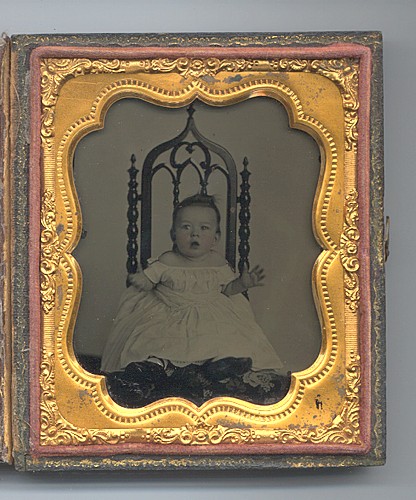
Bright Eyes

Bright Eyes
Although it was common in the 19th century to clothe infant boys and girls in dresses, I am guessing that this off-shoulder dress indicates this is a portrait of a little girl.
Regardless of the gender, the child is clearly alert and lively. A hand is reaching out, and her eyes are open and bright. Her cheeks are lightly tinted.
Ambrotypes are wet-collodion direct-positive photographs dating from the 1850s through 1880s. Wet-collodion photography created negative images on silver sensitized glass plates. A direct positive image could be created by under-exposing a photographic plate, bleaching after development and applying a black backing to one side of the plate. Viewed through the clear side of the glass plate the negative will appear as a positive image.
Ambrotypes (and tintypes) were incapable of achieving the full tonal range of daguerreotypes and paper prints, particularly in the highlights. But this form of photography was popular because it was comparatively inexpensive and gave quick results. Ambrotypes are usually found mounted in leather covered cases. The same is true of daguerreotypes, and much less commonly, tintypes. The term cased-image is used to describe this form of presentation.
This is a 1/6 plate size image.

|
Page created June 1, 2001; updated December 20, 2020
|